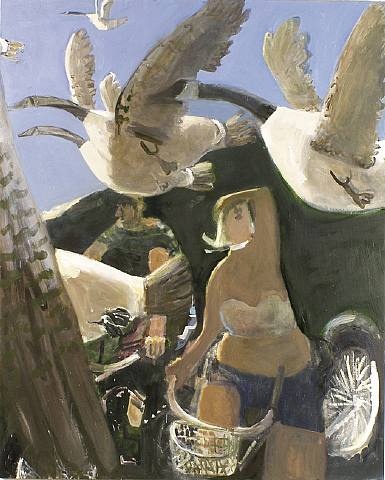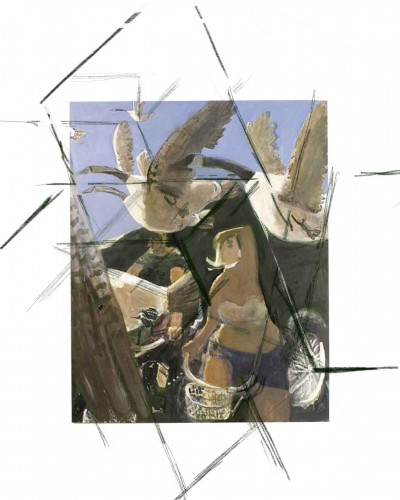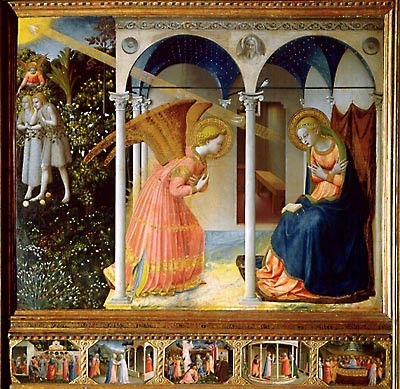Kyle Staver visited WCSU last year and I keep meaning to write about her work. Everyone enjoyed the talk, but for me it was all about the images. The most recent works, based on classic mythical stories were filled with light and space. And with Kyle’s permission I thought it would be fun to analyze a painting that I thought was really interesting. The painting is titled Canada Geese, and those geese are really important.
Here are some of my visual thoughts about the structure of the painting and what makes it so fun to look at.
For me, the main structural plane is constructed by the diagonal relationship between the tree trunk on the left and the goose wing and body on the right. There are some wonderful ambiguities, which of the geese is in front? This brings up the subject of detail verses what I am going to call relational form. From the detail point of view if we focus on the goose on the far right it definitely reads as closest to us, we are reading the details of body neck and head as a unity. But look down at the lower half of the composition and that head of the goose on the right vanishes behind the wing of goose number two which then becomes the closest goose. I am also loving the little goose way at the top which is from a scale point of view, way far away and opens up a huge space on the upper left side, but interestingly it also joins up with the diagonal structure that pulls it even closer to us than the girl on the bicycle.Kind of reminds me of the following by fra Angelico, “Annunciation” 1430.
You see this form repeated in a lot of compositions if you go looking for it, it creates a lot of spatial forward and back tension in the composition, I love that Kyle used it here.
Another aspect of the painting I really like is the use of light working in tension with the form, especially the tree trunk whose diagonal is in tension top to bottom and opens up a space for the light to come through. Late Derain paintings played with this kind of light. I love it when art reinvents formal language in a new context and form. It gives us both an historical connection and deeply personal response. All in all a really pleasurable experience!


